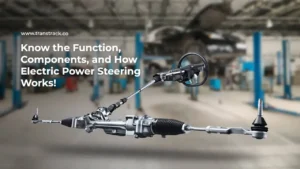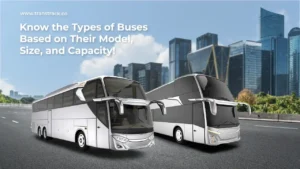Potential of Virtual Reality Technology in Driver Training in Indonesia
Posted on August 20, 2024 by Nur Wachda Mihmidati

The Virtual Reality software market in Indonesia is in a significant growth phase, with projected revenue reaching US$45.3 million by 2024. This indicates that VR technology is increasingly accepted and used in various sectors, both for entertainment, education, and business. With an compound annual growth rate (CAGR) of 8.98% from 2024 to 2029, this market is expected to reach a volume of US$69.6 million by 2029.

Although Indonesia is still behind the United States, which is the leading player with a projected market volume of US$990.3 million by 2024, the Indonesian market shows strong potential. The number of VR software users in Indonesia is expected to increase to 2.3 million by 2029, with the penetration rate rising from 0.7% in 2024 to 0.8% in 2029. This increase is driven by the wider adoption of immersive technology in Indonesia, both among individuals and companies.
In addition, the average revenue per user (ARPU) is estimated at US$23.4, which indicates the economic value of each VR user in Indonesia. This growth indicates that the VR market in Indonesia is not only growing in terms of number of users but also in terms of value generated per user. This reflects the huge potential that Indonesia has in the immersive technology market going forward.
Utilizing Virtual Reality for Driver Training
In the logistics and transportation industry, safety and operational efficiency are two key factors that determine success. One way to improve both aspects is through effective driver training. This is where Virtual Reality (VR) technology comes in as an innovative solution. VR allows companies to create realistic simulations that can be used to train drivers in various situations without any real risk.
A study involving 30 drivers, including men aged 20-29 and 50-65, showed how VR can provide a superior training experience. The participants were tested using two types of VR goggles-HTC Vive Pro and Oculus Rift-as well as a PC screen as a comparison method.

The study results show that VR glasses, such as HTC Vive and Oculus Rift, excel in various aspects compared to PC screens. Users reported higher levels of comfort of use, better graphics intensity, higher image sharpness, and better control of vehicles and situations when using VR. The highest scores on realism and vehicle control comfort indicate that VR provides a simulated experience that is very close to real conditions, which is very important in driver training.
Considering the significant growth of the VR software market in Indonesia, the use of VR in driver training is a strategic move. This technology not only improves driver skills and readiness, but also ensures that training is conducted in a safe and controlled environment. As such, utilizing VR in driver training is a worthwhile investment, supporting the company’s goals focused on improving operational efficiency and safety.
Study and Evaluation of Virtual Reality-Based Driving Simulation
Another study from Gifu University, showed results that individual behaviors and characteristics, such as obeying the speed limit, remaining calm and relaxed while driving, and adjusting speed to changes in road structure, can affect their performance in a simulated environment. Data analysis revealed that these factors are highly influential in assessing the effectiveness of simulated driving.
Advantages
- Realistic Physics Simulation: The simulation offers driving physics that closely resemble the real experience, including car handling, momentum, and tire friction, thus providing an authentic driving sensation.
- Use of VR for a More Realistic Perspective: By using VR technology, the simulation provides a more immersive driving perspective than conventional methods such as monitor screens, enhancing the driver’s immersive experience.
Disadvantages
- Too Simple Simulated Landscape: The landscape of the simulated track is considered too simple when compared to real-world scenarios involving human presence and various obstacles.
- Differences in Steering Control: Steering control in the simulation does not fully reflect the real driving experience, which could affect the accuracy of the simulation.
- Simulation Graphics May Be Too Low: The graphical interface in the simulation may not meet high quality standards, which can reduce the visual experience and detail of the simulation.
Overall, while VR-based driving simulations offer some significant advantages in terms of realism and user experience, there are some areas that require improvement, especially in terms of landscape complexity, steering wheel control, and graphics quality.
Utilization of Virtual Reality for Truck Driver Training
According to a 2019 study from Brandon Hall Group, the use of Virtual Reality (VR) technology as a training tool is increasing in high-risk industries, where operator or driver error can cause significant property damage and even loss of life. The findings show that companies in the survey are making VR tools a top priority in their training for the next 24 months.
VR Implementation in Safety Training
UPS started using VR simulation for basic driver safety training in 2017. This move is a leading example of applying VR technology to improve driver awareness and skills in real-life situations. Other transportation companies are also starting to turn to VR simulation providers to create immersive learning opportunities for their drivers.
Trends and Benefits of Using VR
With more and more companies adopting VR technology, it is clear that VR offers significant benefits in high-risk industrial training. VR simulations not only enable training in a safe environment without any real risks, but also allow for a more immersive and realistic learning experience. This is an important step in preventing mistakes that could be fatal and improving overall safety in the field.
Overall, the utilization of VR in driver training is a strategic move that has the potential to bring great benefits to the logistics and transportation industry in Indonesia. With the adoption of this technology, companies can ensure better training and a safer working environment, while capitalizing on the growing potential of the VR market.
Recent Post
Know the Function, Components, and How Electric Power Steering Works!
December 24, 2025Know the Types of Buses Based on Their Model, Size, and Capacity!
December 22, 2025Topic :
Recommended Articles

 Bahasa Indonesia
Bahasa Indonesia








